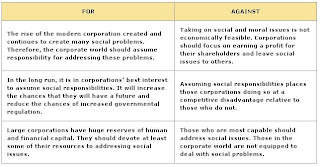Microfinance - Add-on
Read this along with the MFI article in the material.
India – Ranked 8th in the world on microfinance business environment by EIU
Key characteristics of the microfinance business environment:
· The microfinance sector has continued to grow rapidly and with it the need for better regulation. The proposed microfinance Bill has been pending in Parliament since 2007, although it was expected to pass in 2010. However, the bill does not cover non-bank financial companies (NBFCs) and microfinance institutions (MFIs) registered as not-for-profit companies, thereby ignoring over 80% of the microfinance sector.
· The Reserve Bank of India regulates two types of institutions that engage in microfinance activities: banks and NBFCs. There are also Self-Help Groups (SHGs) that operate as informal credit and savings groupings of 5-30 poor individuals. Under the proposed bill, the National Bank for Agriculture and Rural Development (NABARD) would be responsible for regulating, registering and overseeing the microfinance activity of SHGs and NGO-MFIs. A real possibility is a regime with two regulators—RBI for NBFCs and banks and NABARD for SHGs and NGO-MFIs.
· Although they are the largest MFIs, NBFCs are not allowed to accept fixed-term deposits without special approval, which requires an investment grade rating from a credit rating agency. Both regulatory approval and credit ratings have become increasingly difficult, if not impossible, to obtain. NGO-MFIs are currently prohibited from accepting deposits; however, the Micro Financial Sector Bill pending in parliament since 2007 could open up deposit-taking restrictions on NGO-MFIs.
Key changes and impacts since last year:
· Under two separate circulars issued in 2009, domestic banks are required to lend 10% of their adjusted net bank credit to weaker players, such as SHGs, or to MFIs that lend to SHGs.
· A microfinance Credit Information Bureau is being created; it will pool borrowers’ details from 34 participating NBFC-MFIs that are part of the microfinance Institutions Network (MFIN, a regulatory organisation). Moreover, existing credit bureaus are actively involved in a collective effort to standardise data collection from MFIs, as well as to settle on a common data format. UID will help in making this task easier as a unique identification is needed across databases.
· The central bank has allowed 29 banks to operate mobile-based payment services. Some pilots have involved MFIs, but there has been no widespread roll-out of the service.
· As of 1st July 2010, RBI lifted interest rate restrictions on small loans provided by commercial banks in an effort to increase the level of competition in the microfinance sector. Previously, interest rates for all loans under Rs 200,000 from commercial banks had to be set at a level equal to or below the bank’s benchmark Prime Lending Rate.
International Facts
· Peru was ranked first, ahead of the Philippines, Bolivia, Ghana and Pakistan, in the 2010 edition of the Economist Intelligence Unit’s Global microscope on the microfinance business environment. Ecuador, El Salvador, India, Colombia and Kenya round out the top 10 nations. Bangladesh, home of the Grameen Bank, doesn’t even make the top 30.
· The rankings take into account three elements: a country’s regulatory framework, its investment climate (including accounting standards), and the quality of the microfinance services offered.
· Microfinance institutions, and their operations, are regulated with the same norms as banking and other financial institutions in Peru, with some differences in the minimum capital requirement and the number of operations allowed. Provides the best business environment because the regulator has set and enforced rules on capital buffers, leading to a more stable environment for the industry.
· Bangladesh – Govt. has a cap on annual interest rate that MFIs can charge at 27%

Comments
Post a Comment